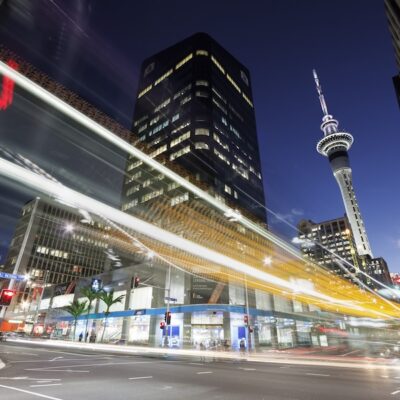Tourism businesses performing better
The latest tourism industry data, sourced from MYOB’s Business Monitor, shows that businesses…
With TRENZ, the country’s largest tourism conference, under way, the latest industry data shows that businesses in the tourism industry are outperforming the SME average on every key measure.
The MYOB Business Monitor survey of over 1,000 SME operators – including 12 percent from the tourism industry – highlighted that over the last 12 months, 43 percent of tourism businesses reported revenue growth, compared to the SME average of 36 percent.
Looking ahead to 2017, tourism operators are expecting to do even better, with 46 percent expecting revenue to rise – well over the SME average of 38 percent. The current quarter is looking particularly positive, with almost half (49 percent) of all SME tourism operators saying they have more sales or bookings in the pipeline.
MYOB General Manager Carolyn Luey says there’s no doubt that the visitor economy, which has now surpassed dairy as our largest industry, is doing very well.
“It’s great to see that not only is the country experiencing record visitor growth but that those earnings are being returned to the local economy through the SMEs in the industry,” says Luey.
“Tourism might be big business for the country but its one that many SMEs participate in and drive forward with new and innovative offerings and experiences. The returns that we are seeing for SMEs are therefore very good news for New Zealand as a whole.”
Those earnings are also more likely to be passed on to local workers, according to the survey. A quarter of all tourism SMEs intend to increase the amount they pay their staff this year and nearly a fifth (19 percent) will be offering more fulltime roles.
“However, many businesses may well be held back by how expensive it is becoming for staff to find accommodation – especially in key visitor markets like Queenstown and Auckland,” says Ms Luey.
According to the Business Monitor, New Zealand’s rising house prices have made it harder for 28 percent of tourism operators to recruit and retain staff, nearly twice the SME average.
The market is also becoming increasingly competitive says Ms Luey, with 37 percent expecting competition to put pressure on their business this year.
“Other key pressures putting the squeeze on SME tourism businesses this year are the cost of fuel, narrowing margins and the burden of compliance.”
“What we are seeing here is a market that is doing very well, but needs to keep a close watch on the fundamentals in order to prevent costs and pressures from blowing out and affecting the bottom line.”
“In the wider sense, there’s also some fundamentals we need to address as a country, like affordable accommodation to support the industry, the availability of skilled staff during seasonal peaks and the costs of a number of compliance areas, especially around health and safety and the resource management.”
“New Zealand has a fantastic industry in tourism, but we need to take a very careful look at how we are managing its growth and planning for the future,” she says.






